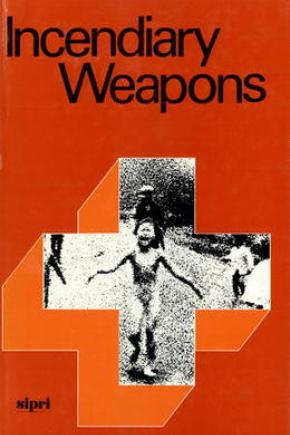Incendiary Weapons
'There was no doubt that, up to 1939, incendiary weapons were forbidden by the accepted laws of war, and that they were universally condemned by the moral conscience of mankind.'
(Philip Noel-Baker, The Arms Race, 1958)
This statement by Nobel Peace Prize-winner Philip Noel-Baker is in stark contrast to the extensive use of incendiary weapons in World War II, Korea, Indo–China and elsewhere since 1939. Incendiary weapons were developed from the unreliable devices of World War I to major weapons of strategic and tactical warfare in World War II. Yet in the post-war legal discussions incendiary weapons were overshadowed by the problem of nuclear weapons. When, following the Korean War, the International Committee of the Red Cross again raised the question of incendiary weapons it was ignored.
The Red Cross is now modernizing the Geneva Conventions. As a result of the efforts of a group of non-aligned nations, and with the support of an overwhelming majority of the members of the United Nations, there is at last a possibility that incendiary weapons will be banned. Few would doubt that such a ban would contribute to “protecting the victims of war” which is the major purpose of the Geneva Conventions.
This book describes not only the development of incendiary weapons, but also their medical effects, their toxicology, the uses to which they have been put and the efforts to prohibit them.
1. The rise of incendiary weapons
Appendix 1A. Incendiary weapons of World War I and World War II
Appendix 1B. Large-scale fires
Appendix 1C. Resolutions of the United Nations General Assembly on napalm and other incendiary weapons and related topics
2. Incendiary weapons today
3. Thermal effects of incendiary weapons on the human body
4. Toxic effects of incendiary weapons on the human body
Appendix 4A. Toxic effects of white phosphorus (WP) munitions
Appendix 4B. Toxicity of incendiary agents, additives and products combustion

